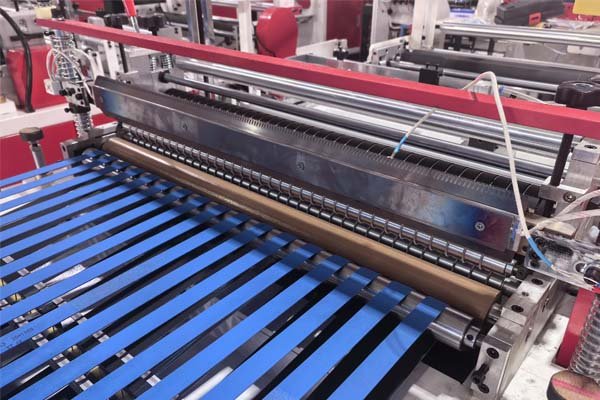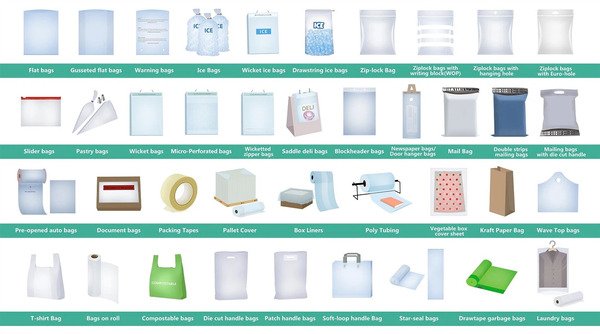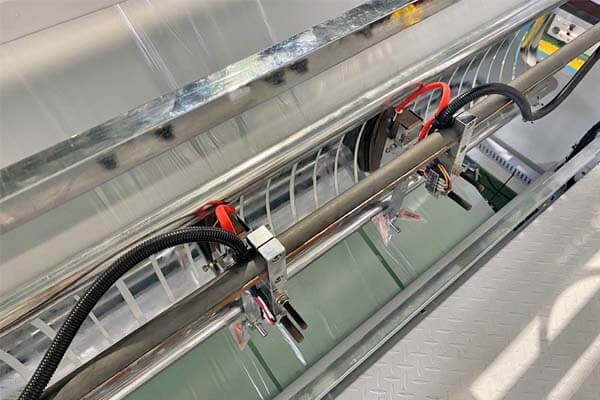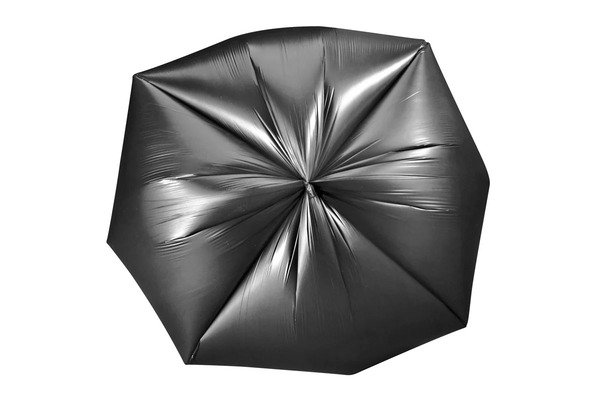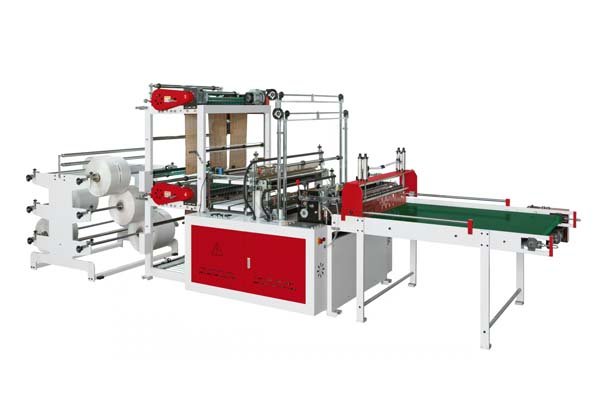
Finding clear pricing for bag-making machinery can be challenging. Many quotes lack transparency, making it difficult for businesses to plan budgets accurately. Misjudging an equipment purchase can affect both production and profitability.
A 6-line flat bag making machine1 typically costs between $8,000 and $15,000 USD, depending on configuration. This range reflects a standard, high-efficiency setup without major customizations. It includes an automated system capable of producing large quantities of flat bags efficiently.
The base model—such as BagMec®’s standard 1000mm machine—comes equipped with a computer control system, auto counting, alarms, a frequency inverter for speed regulation, and a step motor for accurate film feeding. Key components like a brass sealing bar and alloy steel cutting knife are included, offering a ready-to-run package for new and expanding production lines.
Key Cost Factors
Several factors influence the final price of a 6-line flat bag machine:
Machine width, automation level, component quality, and additional features are the primary variables.
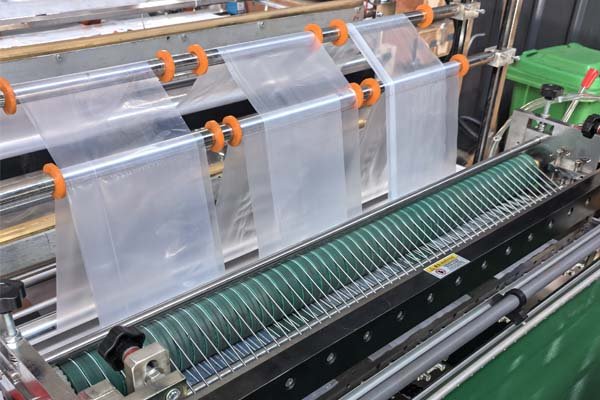
Machines are tailored to production needs, so prices vary. Wider machines, advanced servo systems, upgraded components, and add-on units (like handle punchers or conveyors) will raise the cost.
1. Machine Width and Configuration
The working width is a major cost driver. The standard 1000mm width is versatile, but wider models come with:
- Stronger frames for structural integrity
- Longer components such as rollers and sealing bars
- More powerful motors to handle heavier film rolls
2. Automation and Component Quality
Higher levels of automation and better-quality components increase efficiency and longevity, but also raise the price.
| Feature Tier | Standard (Base Price) | Premium (Upgrade) |
|---|---|---|
| Control System | Zhongxin PLC | Siemens or Mitsubishi PLC |
| Main Motor | Yikun 1.5kW | Servo Motor (Energy-saving) |
| Frequency Inverter | Defu 1.5kW | Delta or Schneider |
| Temperature Control | YKC Basic | Precision Controller (±1°C) |
Premium components typically result in greater uptime and lower energy usage, especially important for operations prioritizing reliability.
3. Custom Features and Add-Ons
Optional features allow customization for specific applications.
| Add-On | Function | Use Case |
|---|---|---|
| Hydraulic Punching | Adds handle punching | T-shirt retail bags |
| Static Eliminator Box | Reduces static cling | Thin film high-speed ops |
| Conveyor Belt | Moves finished bags automatically | Reduces labor needs |
| Custom Sealing Bar | Specialized seal types | Heavy items or branding |
Bag Types the Machine Can Produce
A 6-line machine is designed for bottom-seal flat bags, but with optional modules, it can also produce handle bags (T-shirt bags).
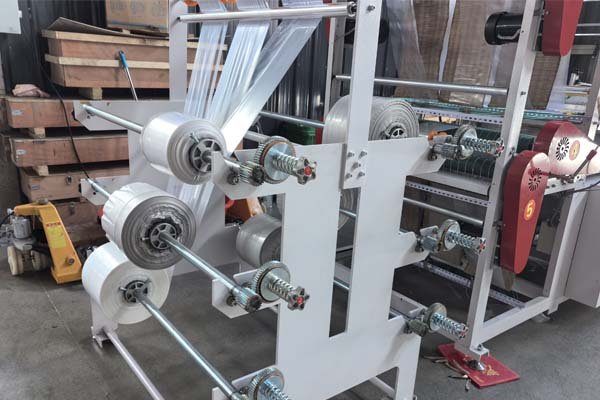
Main Products
- Flat Bags: Produced from HDPE, LDPE, or PP film using heated brass sealing and cold knife cutting.
- T-Shirt Bags: Requires hydraulic punching add-on for handles.
Material Compatibility
| Material | Description | Common Use |
|---|---|---|
| HDPE | Rigid, hazy | Grocery, merchandise bags |
| LDPE | Flexible, clear | Produce, food bags |
| PP | Very clear, heat-resistant | Textile, bakery packaging |
Production Speed
Production rate varies based on material and bag specs.
Typical speed is 10–120 bags per minute per line, with a total maximum output of up to 720 bags/minute across all six lines.
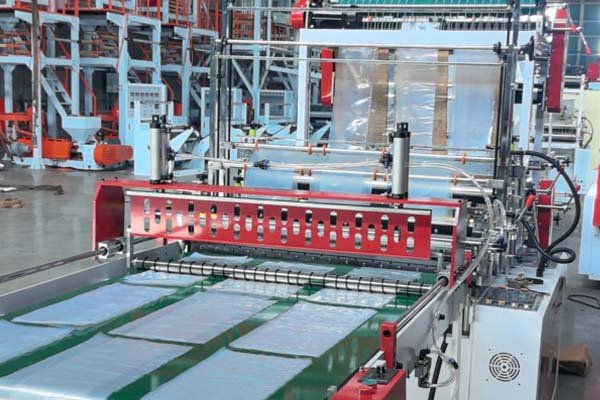
Output by Bag Type
| Bag Type | Thickness | Length | Speed/Line | Total Output |
|---|---|---|---|---|
| Small Produce Bag | 0.015mm | 300mm | 110–120 bpm | 660–720 bpm |
| T-Shirt Bag | 0.025mm | 500mm | 90–100 bpm | 540–600 bpm |
| Trash Liner | 0.05mm | 900mm | 50–60 bpm | 300–360 bpm |
Size Adjustability
The machine can adapt to different bag sizes by modifying settings and adjusting line configurations.
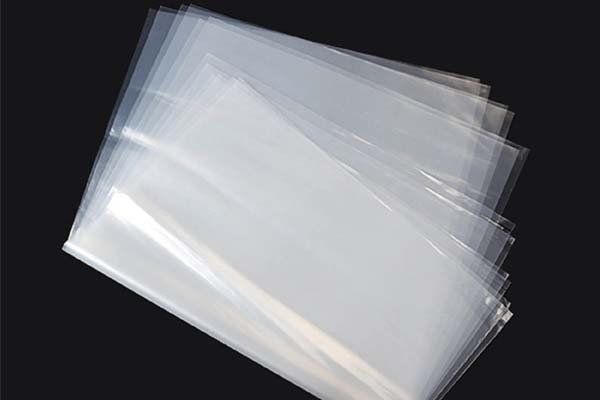
- Bag Length: Controlled electronically (up to 2000mm)
- Bag Width: Controlled mechanically by film roll arrangement
| Bag Width | Lines Used | Common Use |
|---|---|---|
| ≤150mm | 6 | Small bags (candy, hardware) |
| ~225mm | 4 | Produce, retail |
| ~300mm | 3 | Grocery, magazine |
| ~450mm | 2 | Medium trash bags |
| ~900mm | 1 | Industrial liners |
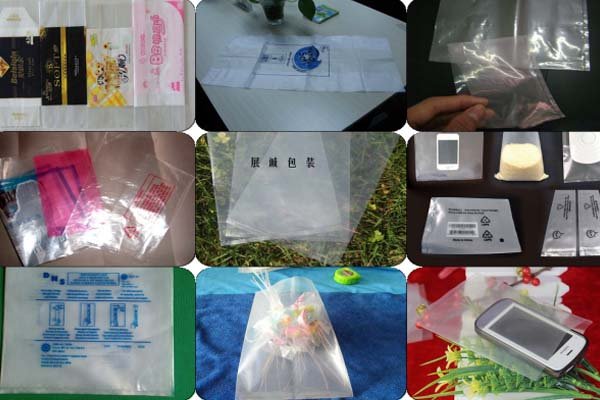
Suitability for Small-Scale Factories
For smaller operations, the upfront investment may appear steep. However, the return on investment2 can be rapid due to reduced labor needs and high output.
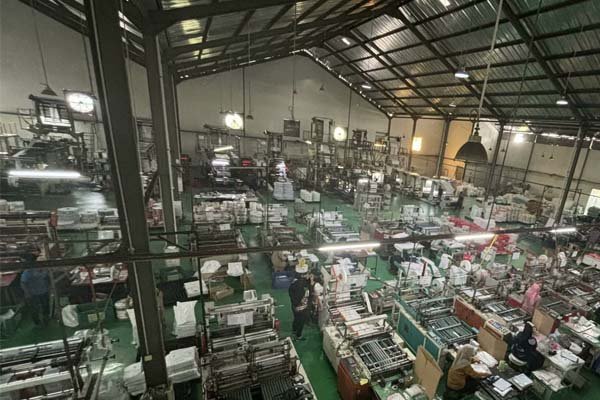
ROI Breakdown
| Cost Factors | Benefit Factors |
|---|---|
| ~$8,000 Initial Cost | Labor Reduction: 1 operator can manage full output |
| Installation & Training | High Output: Up to 720 bags/min |
| Energy Use | Low Waste: Less film loss |
| Maintenance | Flexibility: Enter multiple markets with one machine |
Scalability is also built-in: start with flat bags, then expand into retail and industrial markets by adding modules.
Choosing a Reliable Manufacturer
Sourcing the right machine includes selecting the right partner.
Buying directly from a specialized manufacturer with technical expertise and global support ensures long-term reliability.
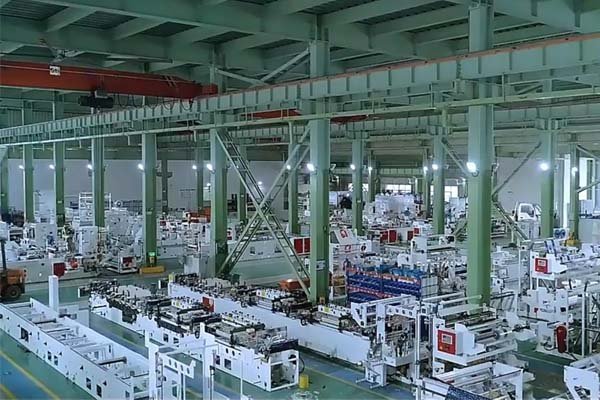
Key criteria:
1. Full Technical Expertise
Manufacturers like BagMec® handle R&D, production, and service in-house—ensuring fast, accurate support.
2. Documented Quality Control
A 5-step QC process ensures machine durability and performance:
- Steel hardness testing
- Laser alignment checks
- 72-hour operational test
- CE-compliant safety checks
- Pre-shipment validation
3. Global Logistics & Support
- Supports EXW, FOB, CIF, DDP terms
- Optional on-site training and installation
- Remote diagnostics available via IoT
Conclusion
A 6-line flat bag making machine is a high-speed, cost-effective solution for both small and large manufacturers. With a base cost starting around $8,000 and scalable options available, it offers fast ROI through automation, efficiency, and versatility.

